Croatia boasts a rich architectural heritage, showcasing a blend of historical influences and unique artistic expressions. Here are 10 distinctive structures that stand out:
Table of Contents
Diocletian’s Palace
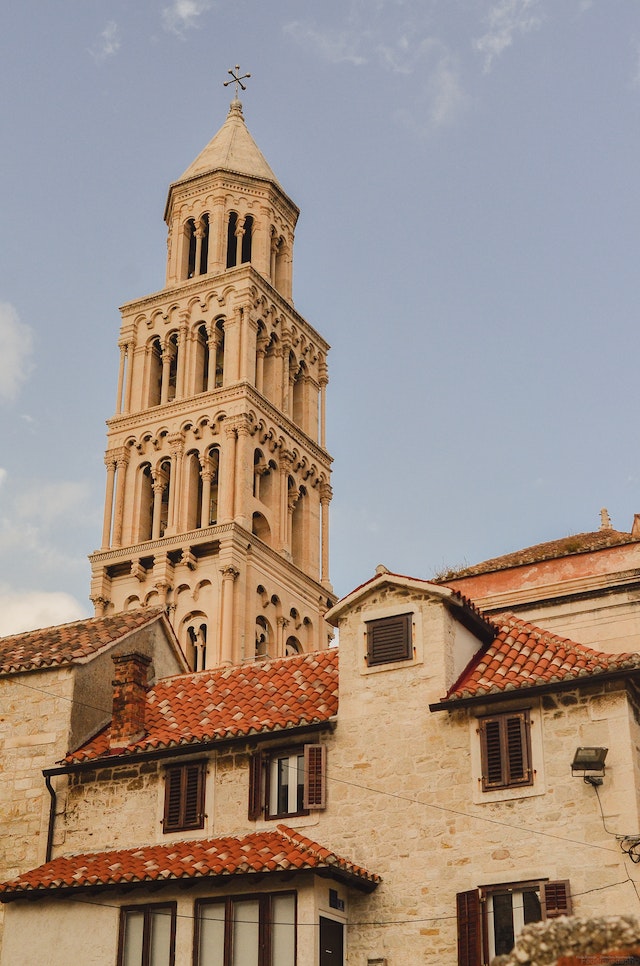
Diocletian’s Palace, nestled in the heart of Split, Croatia, stands as a captivating testament to the ancient Roman empire’s enduring legacy. Constructed by the Roman Emperor Diocletian in the 4th century, the palace represents a harmonious blend of imperial grandeur and practicality. This massive structure, which served as a combination of a luxurious villa and a fortified military camp, has evolved over centuries into a bustling urban center. Its towering walls, ancient columns, and intricate architectural details bear witness to its rich history, from Roman times through the medieval period and beyond. As you wander through its labyrinthine streets and hidden courtyards, you’ll encounter a living museum where medieval houses, shops, and vibrant cafes coexist within the ancient walls. Diocletian’s Palace, a UNESCO World Heritage Site, remains a vibrant hub of culture, history, and modern life, inviting visitors to step back in time while enjoying the energy of a living city that has grown around this remarkable Roman relic.
Dubrovnik’s City Walls
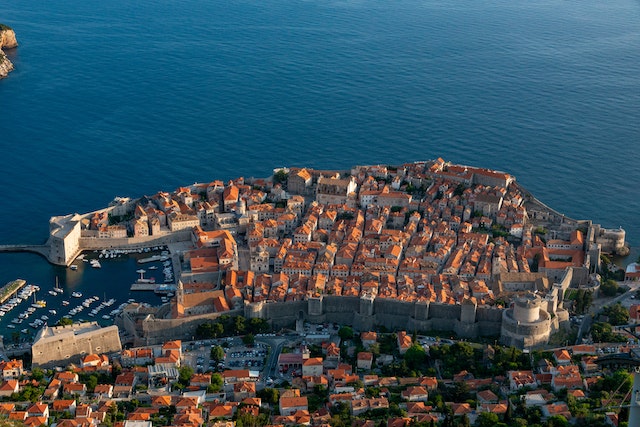
Dubrovnik‘s City Walls, an emblem of the city’s rich history and resilience, envelop the historic Old Town in a majestic embrace. These centuries-old fortifications, spanning almost 2 kilometers, offer a remarkable vantage point for soaking in the breathtaking panorama of the Adriatic Sea and the charming red-tiled roofs of the city below. Walking along the walls is a journey through time, as you traverse watchtowers, fortresses, and bastions that once defended the city against invaders. The intricate architectural details, such as the Minčeta Tower and the Lovrijenac Fortress, narrate stories of a bygone era. As the sun sets, the walls come alive with a warm glow, creating an enchanting atmosphere that captures the spirit of Dubrovnik’s storied past. The Dubrovnik City Walls not only offer a unique perspective on the city’s history and architecture but also invite visitors to experience the pride and resilience that have defined this UNESCO-listed gem for generations.
St. Mark’s Church
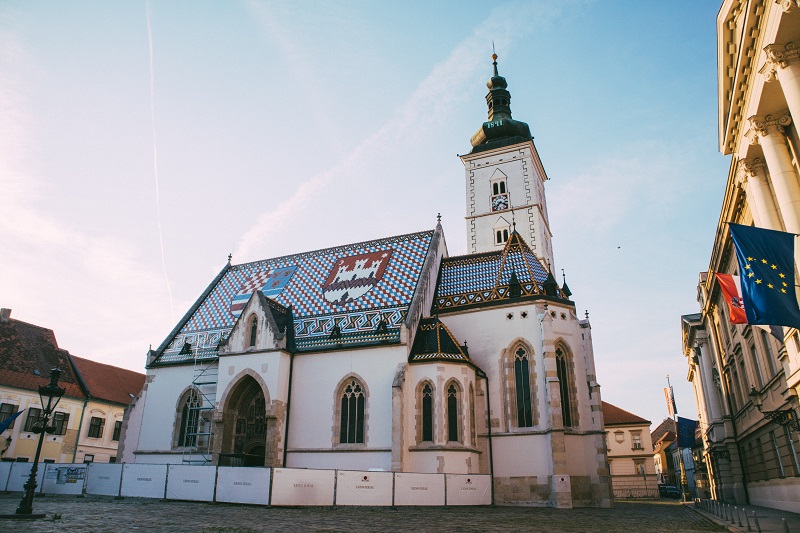
St. Mark’s Church in Zagreb, Croatia, stands as an architectural gem and a vivid representation of the city’s historical and cultural significance. With its distinctive multi-colored tiled roof displaying the Croatian and Zagreb coats of arms, the church is an iconic landmark nestled in the heart of the Upper Town. The church’s Gothic architecture, adorned with intricate carvings and sculptures, exudes a sense of timelessness that transports visitors to a different era. Its interior houses a collection of medieval frescoes and artworks, reflecting the spiritual and artistic heritage of the region. St. Mark’s Church is more than just a religious site; it is a symbol of the city’s identity, embodying the intersection of faith, history, and artistic expression. As one of Zagreb’s most recognizable landmarks, the church invites exploration and contemplation, offering a glimpse into Croatia’s rich cultural tapestry and its connection to the centuries that have shaped its present.
Pula Arena
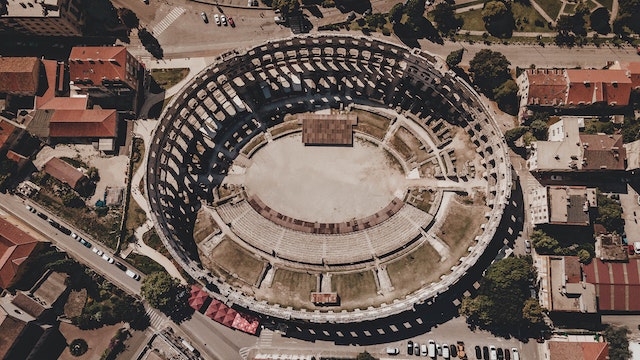
Pula Arena, a remarkable Roman amphitheater situated in the heart of Pula, Croatia, is a captivating testament to the grandeur of ancient architecture. This exceptionally well-preserved structure, built in the 1st century, boasts a stunning combination of Roman engineering and artistic mastery. With its imposing facade and intricate network of arches, the arena once hosted gladiator contests, theatrical performances, and other public spectacles. Today, it stands as one of the world’s best-preserved Roman amphitheaters, offering visitors a unique opportunity to step back in time and experience the historical ambiance of ancient entertainment. As you walk through its corridors and gaze upon the arena floor, you can almost hear the echoes of the past, envisioning the excitement that once filled the air. Pula Arena’s iconic presence and historical significance make it a must-visit destination that not only offers a glimpse into Croatia’s ancient heritage but also connects visitors to the collective human experiences of generations long gone.
Šibenik Cathedral
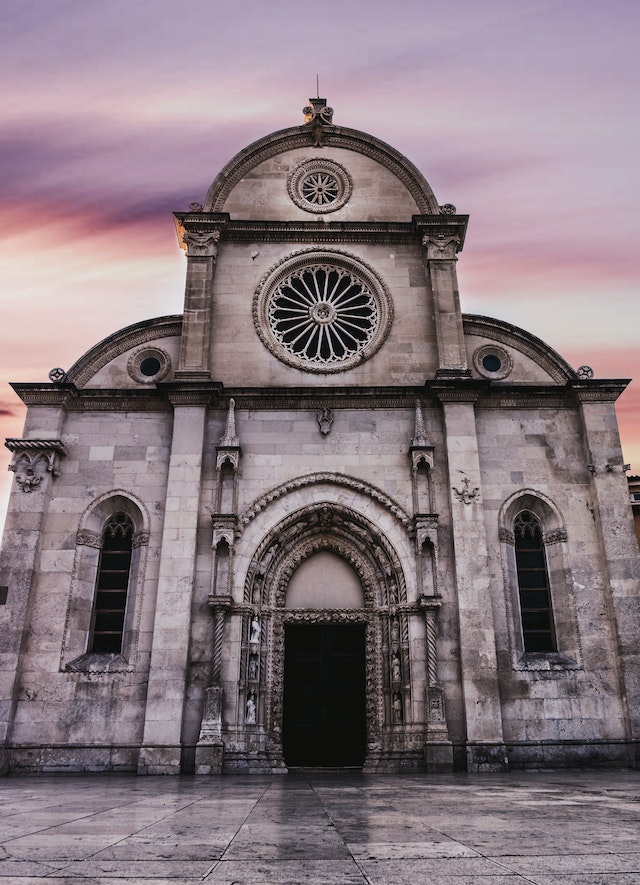
Šibenik Cathedral, officially known as the Cathedral of St. James, is a masterpiece of Gothic and Renaissance architecture nestled in the coastal town of Šibenik, Croatia. This UNESCO World Heritage Site stands as a symbol of both artistic ingenuity and cultural identity. What sets this cathedral apart is its unique construction technique: it is entirely made of stone, without the use of any binding material. The intricate stonework of its facade, adorned with sculptures and decorative elements, captures the creativity of the master craftsmen who worked on its creation. Inside, the cathedral’s three naves showcase a harmony of architectural styles, with Renaissance details complementing the Gothic structure. The baptistry, a separate structure adjacent to the cathedral, is a small marvel of its own, featuring exquisite artwork and ornate decoration. Šibenik Cathedral not only celebrates the spiritual history of the region but also serves as a timeless testament to human creativity, innovation, and the enduring power of architectural beauty.
Euphrasian Basilica
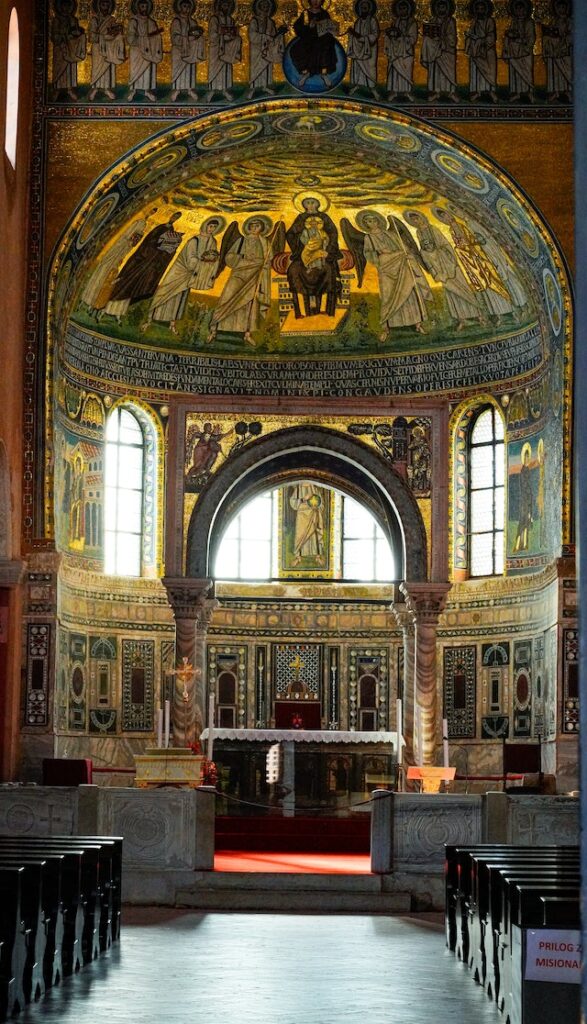
The Euphrasian Basilica in Poreč, Croatia, stands as a radiant jewel of early Christian art and architecture along the Adriatic coast. This UNESCO World Heritage Site is a testament to the region’s rich historical and religious legacy. Built in the 6th century, the basilica showcases intricate mosaics that depict biblical scenes, offering a vivid glimpse into the artistic sensibilities of the time. The harmonious blend of Byzantine and Romanesque elements creates a unique visual experience that transports visitors back to the era of early Christianity. The complex also includes a baptistry and a Bishop’s Palace, adding to the site’s historical significance. The Euphrasian Basilica’s intricate mosaics, delicate architectural details, and spiritual aura make it a captivating destination for both history enthusiasts and those seeking a connection to Croatia’s rich cultural heritage.
Trakošćan Castle
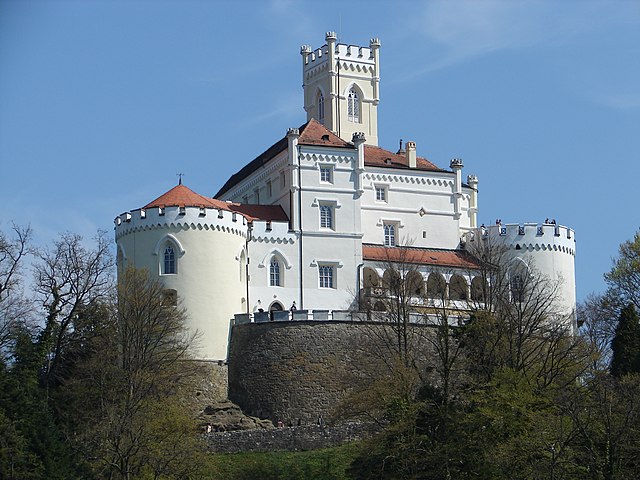
Trakošćan Castle, a fairytale-like gem nestled in the Croatian countryside, exudes a timeless elegance that harks back to a bygone era. Situated atop a hill overlooking a serene lake and lush parkland, the castle’s turrets, red-roofed towers, and picturesque surroundings create an enchanting scene that seems plucked from a storybook. Built in the 13th century and later transformed into a romantic residence in the 19th century, Trakošćan Castle showcases a harmonious blend of architectural styles, from medieval fortifications to neo-Gothic accents. The castle’s interior houses a museum that invites visitors to delve into its history through an array of artifacts, paintings, and period furnishings. The serene beauty of its lakeside setting, the romantic allure of its architecture, and the historical treasures within its walls collectively offer a captivating journey through time, inviting visitors to step into the past and immerse themselves in the charm and elegance of Trakošćan Castle.
Rector’s Palace

The Rector’s Palace in Korčula, Croatia, is a splendid example of Venetian architecture that graces the picturesque streets of this historic island town. Built in the 15th century, the palace stands as a testament to the town’s rich maritime and cultural heritage, reflecting the influence of the Venetian Republic during its rule over the region. The palace’s elegant facade, adorned with delicate architectural details and Gothic windows, exudes a sense of grandeur that befits its historical significance. Inside, the palace houses a museum that offers insight into Korčula’s past, showcasing artifacts, paintings, and period furnishings that transport visitors to the town’s golden age. As you wander through its chambers and courtyards, you can almost feel the echoes of the dignitaries and rulers who once walked its halls. The Rector’s Palace not only tells the story of Korčula’s vibrant history but also stands as a remarkable architectural gem that captures the essence of the town’s charm and cultural richness.
Zagreb Cathedral
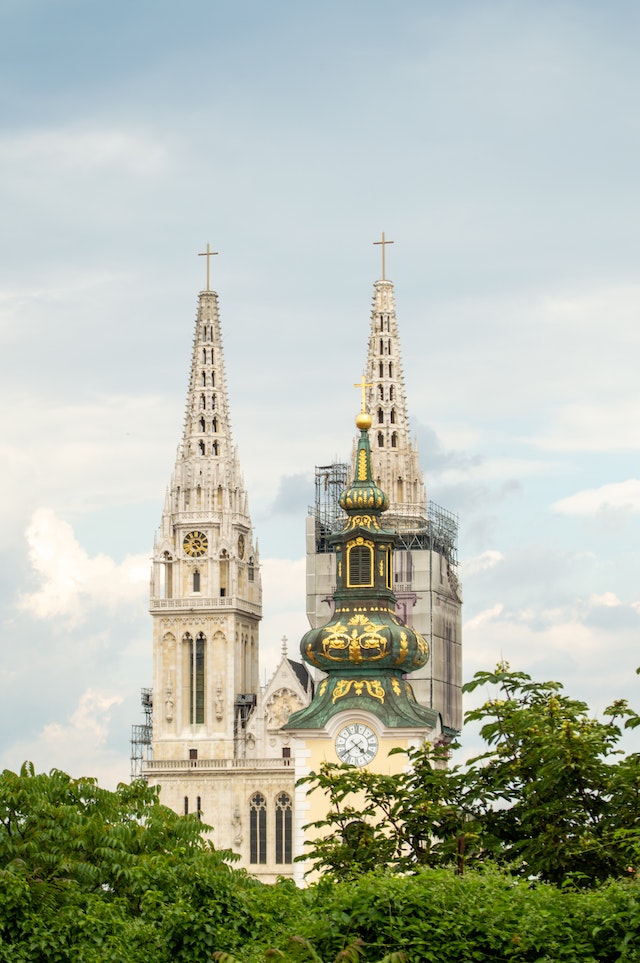
Zagreb Cathedral, officially known as the Cathedral of the Assumption of the Blessed Virgin Mary, stands as an architectural masterpiece and a spiritual center in Croatia’s capital. With its towering Neo-Gothic spires, the cathedral is an iconic symbol of the city’s skyline and a testament to both faith and human achievement. Built on the site of previous churches dating back to the 11th century, the cathedral’s history is intertwined with the city’s evolution. Inside, the grandeur of its nave, intricate stained glass windows, and ornate altars create an atmosphere of reverence and awe. The cathedral also houses a treasury that preserves religious artifacts and historical relics. The view from the cathedral’s observation deck offers a panoramic perspective of Zagreb, a fitting reminder of the role this remarkable structure plays in the city’s identity. Zagreb Cathedral not only serves as a place of worship but also stands as a cultural touchstone, connecting visitors to Croatia’s spiritual heritage and the enduring power of architectural beauty.
Plitvice Lakes Wooden Walkways

The Plitvice Lakes National Park’s wooden walkways are a harmonious marriage of human engineering and natural splendor, allowing visitors to traverse a realm of cascading waterfalls, crystal-clear lakes, and lush landscapes that seem straight out of a fairy tale. These meticulously crafted walkways, which wind through the heart of Croatia’s most famous national park, provide an immersive experience that keeps the delicate ecosystem undisturbed while offering an up-close encounter with its enchanting beauty. As you tread upon the wooden planks, you’ll find yourself suspended above the emerald waters and immersed in a symphony of rushing water and birdsong. The walkways navigate the park’s intricate network of lakes, allowing you to marvel at the interplay of sunlight and water as it dances over limestone formations. The Plitvice Lakes wooden walkways are not just a means of exploration; they are a testament to the delicate balance between human access and nature preservation, inviting visitors to discover the magic of this UNESCO World Heritage Site in an eco-conscious and breathtaking way.
Historic and religious structures in Croatia are not mere architectural marvels; they are living testaments to the nation’s rich history, culture, and spirituality. From the ancient Roman amphitheaters to the ornate cathedrals and monasteries, these structures embody the stories of civilizations that have shaped Croatia over centuries. They stand as guardians of artistry and craftsmanship, showcasing the talent of master builders and artists from various epochs. Beyond their aesthetic appeal, these buildings serve as places of reflection, connecting the present generation to the spiritual and cultural heritage of their ancestors. The beauty of these structures transcends mere aesthetics; it lies in their power to evoke a sense of wonder and reverence, offering visitors a window into the soul of Croatia, where history, faith, and artistic expression have converged to create a rich and enduring legacy.
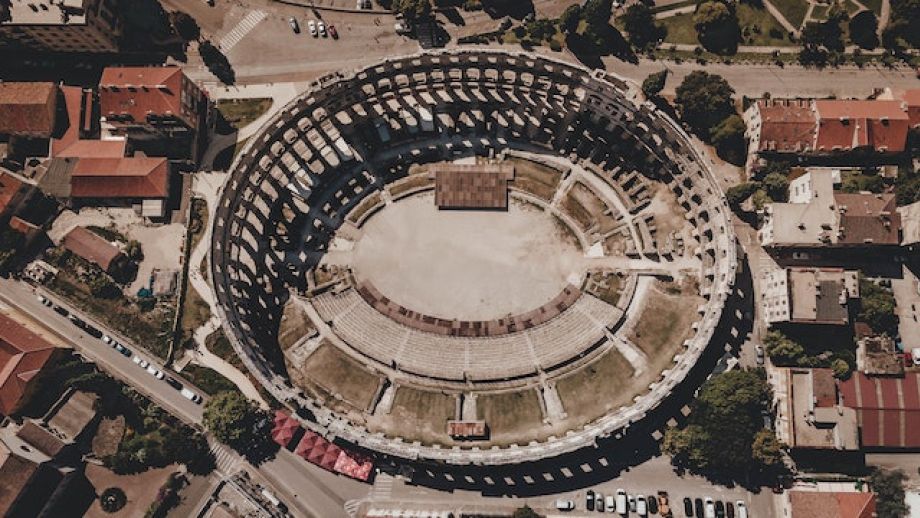




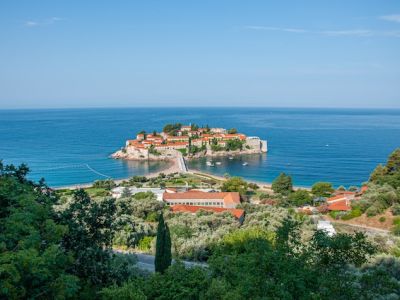
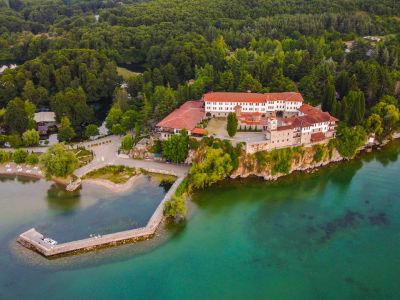
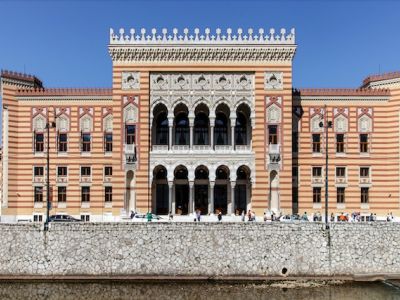
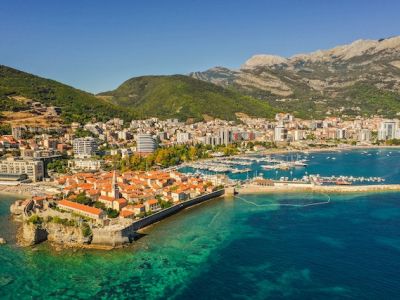
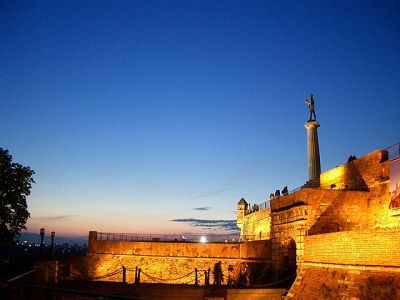
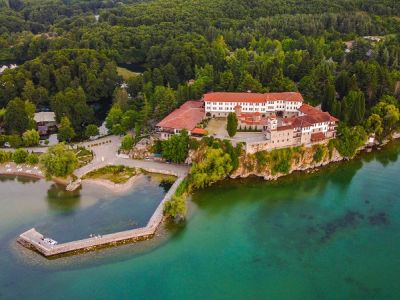
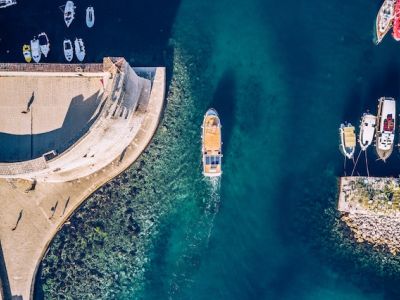
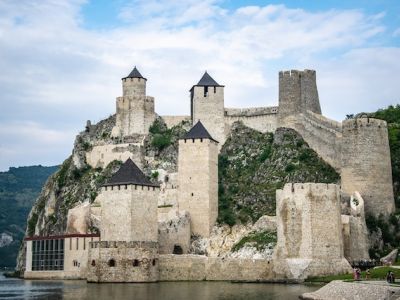
Leave a Reply